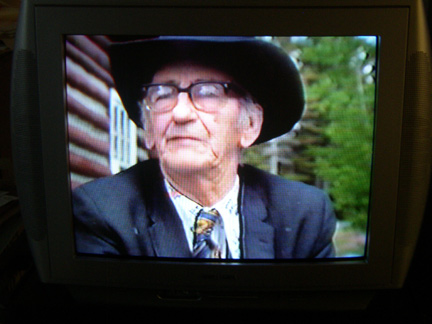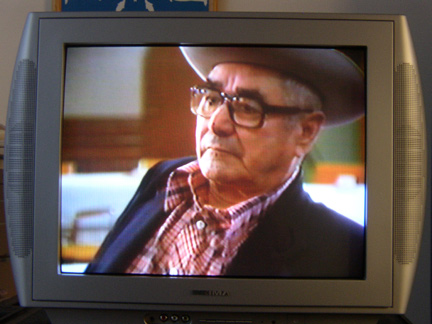|
Maurice L'Hirondelle Former President, FMSA
click to enlarge cover |
Start 1930-31
There was enough division within the association so that in 1940 a competing Métis Provisional Council was formed in February in Edmonton, with Norris as the Chairman.
These internal divisions were focused on Dion. He was pressured by Brady, Norris and Tomkins to hold a convention in 1940 but instead he asked for patience and explained that his hands were tied. He meant that his employer, Frank Buck, was watching him closely for signs of disloyalty. Buck framed his concerns by way of saying that Dion was not following government policy in his attempts to have fair treatment for Métis in the Northeast. Buck and Dion were in almost continual conflict over procedures and the treatment of Métis and their land.
But still the Métis association had Dion as its nominal president. The old association, however, had been essentially moribund since 1936.
There were enough interested Métis in May 1940 for Brady and the Provisional Council to call a convention at which Dion was forcibly retired and thanked for his founding work. The delegates developed by-laws which prepared for a future role for the association as an umbrella organization that could focus on protecting collective Métis rights. However, Norris, the President now, enlisted in the army in 1940 and as a result the association had no leadership once again.
By the beginning of the 1940s, even Tomkins and Dion, government employees, were having trouble justifying government action regarding the Métis colonies. By 1942 Dion returned to teaching at the Elizabeth (named after his wife) Colony school following a period as government supervisor there.
Tomkins, however, kept working for Métis rights from within government, as a supervisor until 1947 when he too came in conflict with the province's chief Métis administrator. This time it was A. C. McCully who had replaced Frank Buck a few years before.
Immediately prior to 1941, Brady was mainly an organizer of the fish pool in the Lac La Biche area. In late 1941, he joined Tomkins as a civil servant. He became the supervisor of the Wolf Lake Colony and his expressed impression was that Wolf Lake and Fishing Lake Colonies should be closed and the people moved to Keg River. However, he too soon enlisted in the army and did not return to the Alberta association.
In January 1941, the Bureau of Public Welfare (Frank Buck was the key administrator) presented a report that confirmed the rescinding of land alotted to two colonies: Touchwood (there was significant commercial fishing interest involved) and Marlboro (there was significant timber available for commercial development). The report said the “Métis representatives” (read Dion and Tomkins) had reviewed and accepted these decisions.
None of the Métis leaders was that pleased with the results of their work during the decade. One of their main concerns was that although the colonies and their administration had taken shape, much as they had proposed in 1933, the scheme had not met the original objective of providing the Métis with the opportunity for independent, autonomous self-government and sustainable, separate economic development.
The scheme had come under the administration of the Bureau of Public Welfare and as a result the Métis felt they were treated and characterized as indigent and destitute, essentially unable to care for themselves.
The tension between the Métis on the Colonies and the government grew even stronger during next decades.
The tension between
the Métis on the Colonies and the government grows during next decades. |


